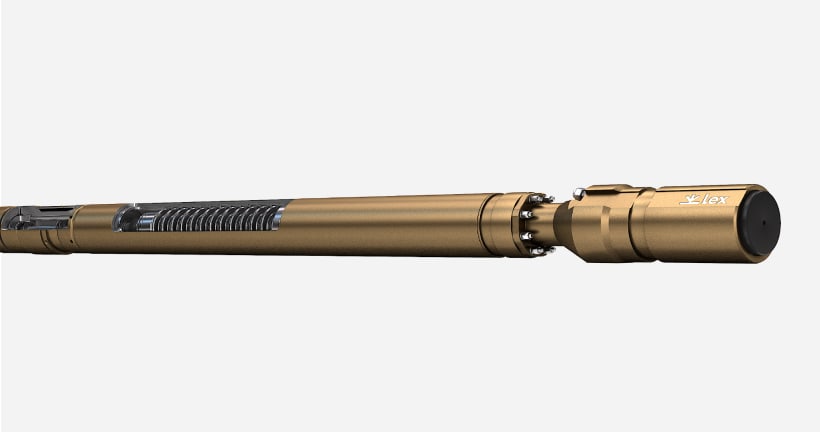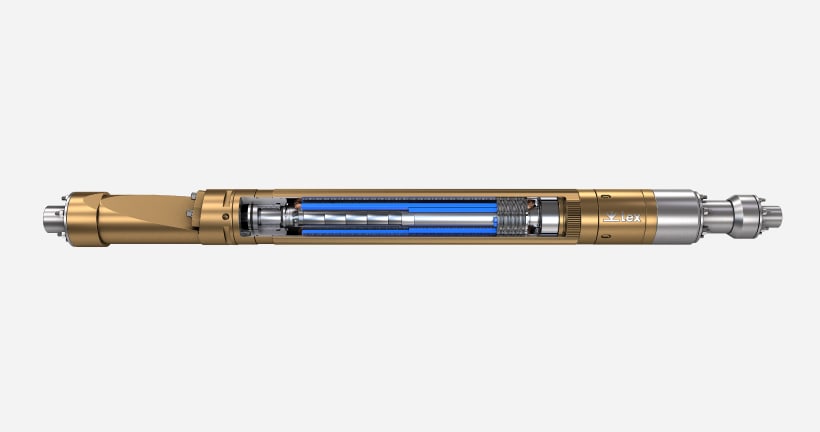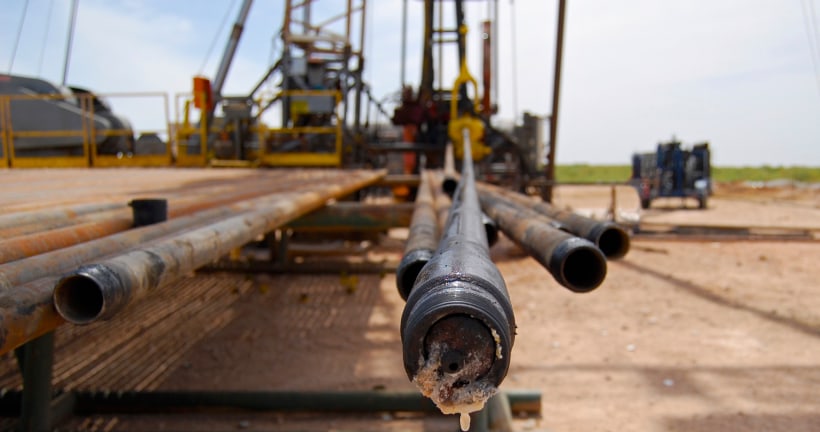Lex Ultra-High-Speed ESP installations Results
- We proved the high tolerance of Ultra-High-Speed ESP (UHS ESPTM) to solids in the produced fluid over 2,000 ppm (2,000 mg/l) due to innovative modular design and wear-resistant stage materials;
- Ramp-up time was reduced in most of the field cases by average 30% vs. standard equipment;
- Zero wear-related failures of Gen4 Ultra-High-Speed ESP from 300+ installations have been found since 2016.
Case # 1
Reservoir Data
| Static Pressure | 140–160 bar |
| Bubble Point Pressure | 69 bar |
| Solution GOR | 178 scf/stb (32 m3/m3) |
| Oil Density | API 30.4 (874 kg/m3) |
| Oil Viscosity | 21 cP |
| Reservoir Depth | 7,100–7,200 ft TVD (2,162–2,195 m TVD) |
Operating Data
| ESP Setting Depth | 8,700 ft MD (2,651 m MD) |
| Production | 35–55 cmpd |
| WC | 43–49% |
| FBHP | 40 bar |
| Start-up Date | 15 March 2015 |
| Status | Pulled |
| Runlife | 1,280+ days |
| Max Sand Production | 2,080 ppm (2,080 mg/l) |
| Running cycles | 15 000+ |
| Operating duty | Periodic |
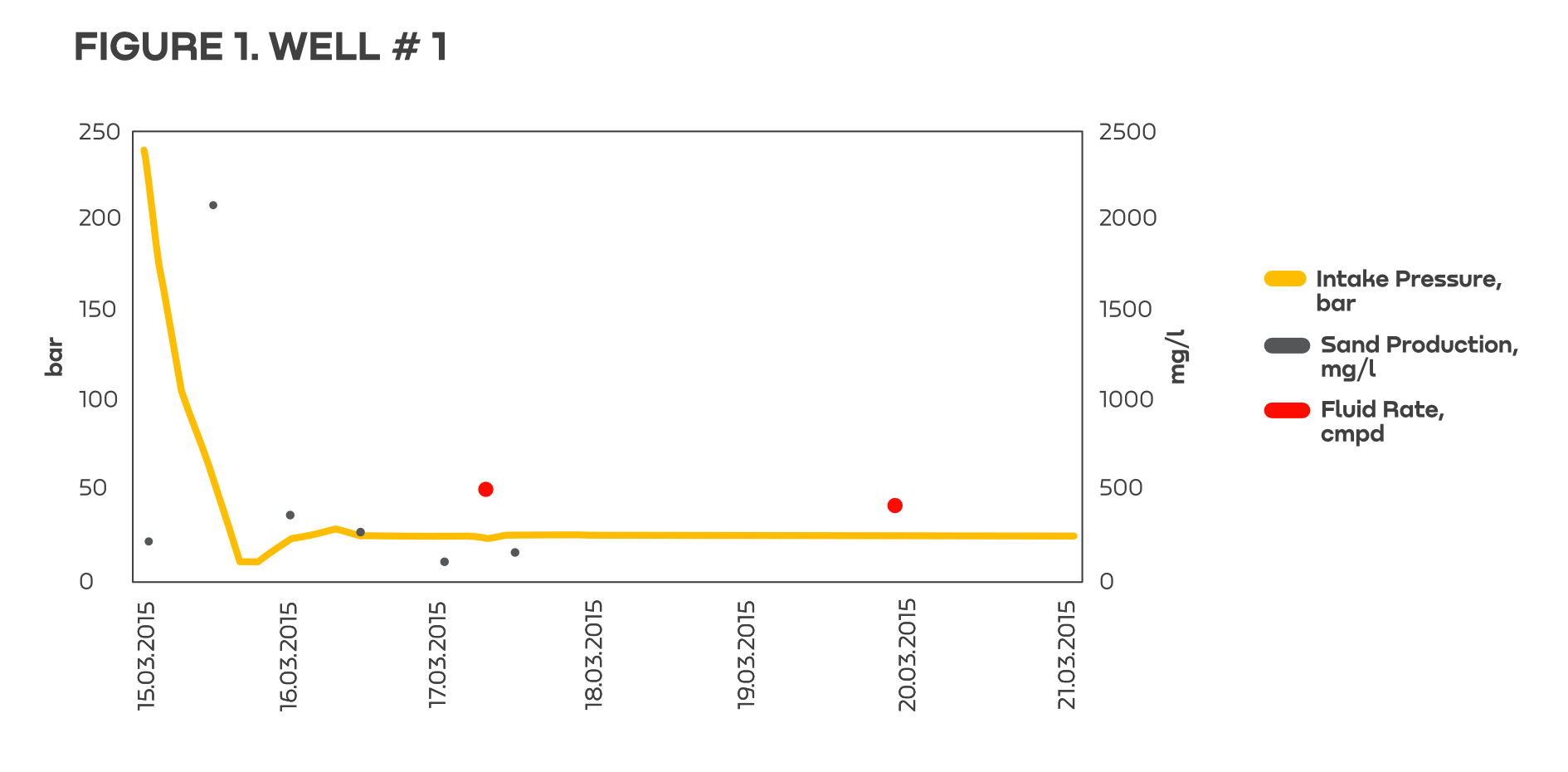
Case # 2
Reservoir Data
| Static Pressure | 140–160 bar |
| Bubble Point Pressure | 69 bar |
| Solution GOR | 178 scf/stb (32 m3/m3) |
| Oil Density | API 30.4 (874 kg/m3) |
| Oil Viscosity | 21 cP |
| Reservoir Depth | 7,100–7,200 ft TVD (2,162–2,195 m TVD) |
Operating Data
| ESP Setting Depth | 9,586 ft MD (2,922 m MD) |
| Production | 40–45 cmpd |
| WC | 41–45% |
| FBHP | 40 bar |
| Start-up Date | 10 July 2017 |
| Status | Pulled |
| Runlife | 364 days |
| Max. Sand Production | 2,448 ppm (2,448 mg/l) |
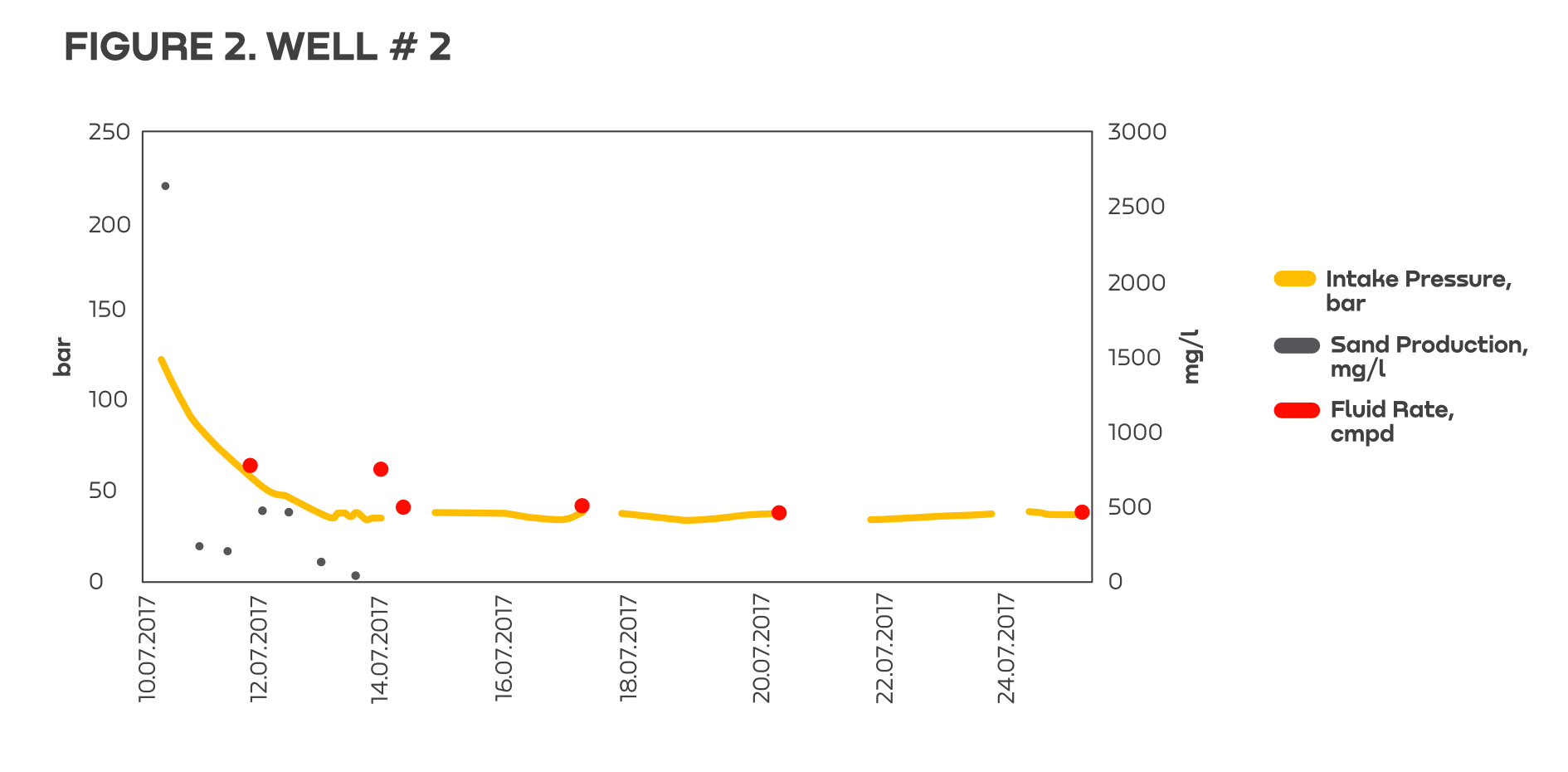
Case # 3
Reservoir Data
| Static Pressure | 215–235 bar |
| Bubble Point Pressure | 72 bar |
| Solution GOR | 147 scf/stb (26,3 m3/m3) |
| Oil Density | API 30.4 (874 kg/m3) |
| Oil Viscosity | 21 cP |
| Reservoir Depth | 7,160 ft TVD (2,182 m TVD) |
Operating Data
| ESP Setting Depth | 8,600 ft MD (2,623 m MD) |
| Production | 90–100 cmpd |
| WC | 10–14% |
| FBHP | 40 bar |
| Start-up Date | 02 January 2017 |
| Status | Stopped |
| Runlife | 1,242+ days |
| Max. Sand Production | 2,390 ppm (2,390 mg/l) |
| Operating duty | Constant |
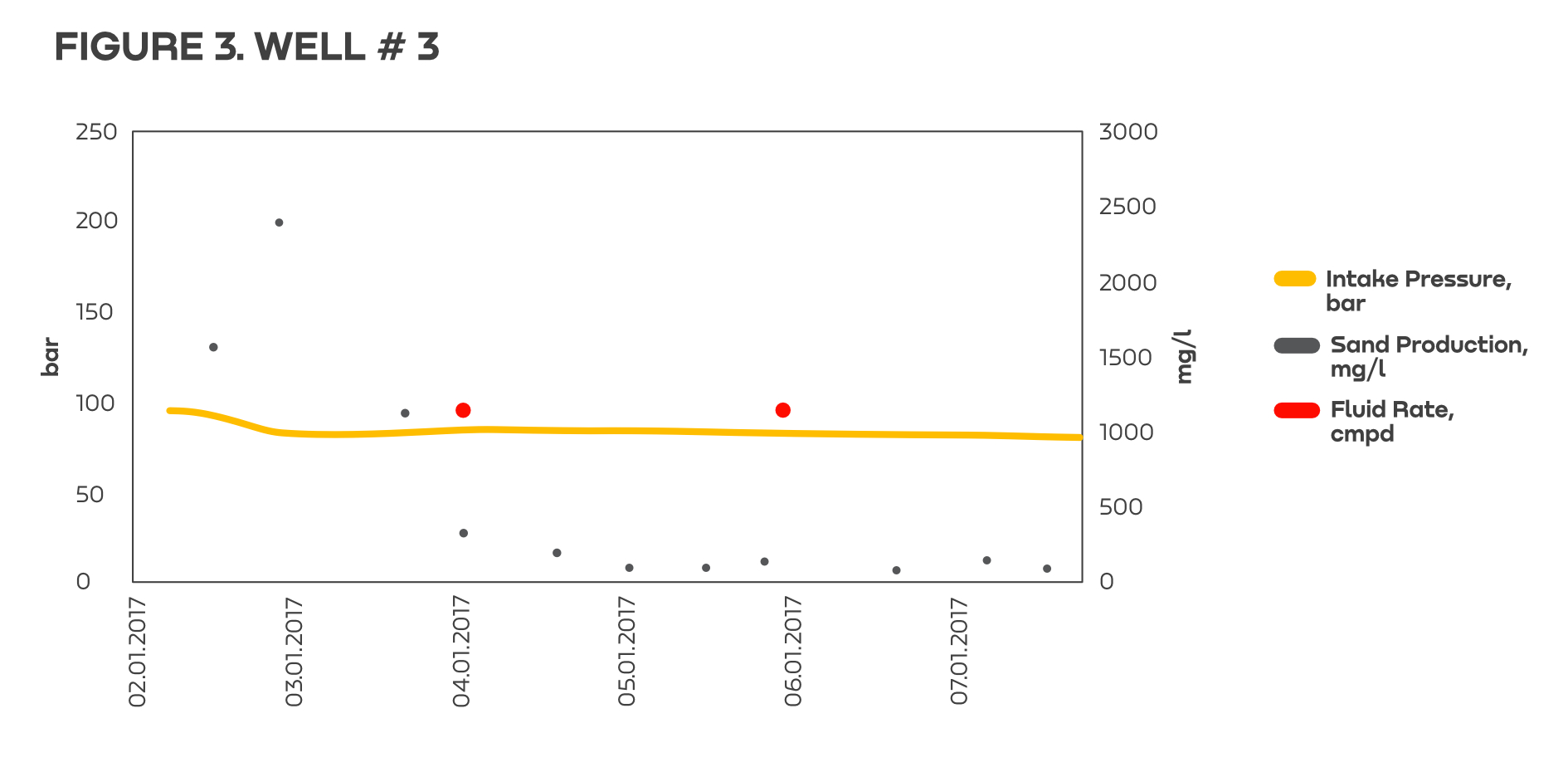
Case # 4
Reservoir Data
| Static Pressure | 179–225 bar |
| Bubble Point Pressure | 72 bar |
| Solution GOR | 163 scf/stb (29 m3/m3) |
| Oil Density | API 30.4 (874 kg/m3) |
| Oil Viscosity | 21 cP |
| Reservoir Depth | 6,804-7,000 ft TVD (2,074–2,131 m TVD) |
Operating Data
| ESP Setting Depth | 7,310 ft MD (2,227 m MD) |
| Production | 14–35 cmpd |
| WC | 15–20% |
| FBHP | 40 bar |
| Start-up Date | 23 September 2015 |
| Status | Pulled |
| Runlife | 514 days (runlife of previously installed ESP was 94 days) |
| Max. Sand Production | 1,226 ppm (1,226 mg/l) |
| Operating duty | Constant |
In 2017 we installed another UHS ESPTM system in this well (see below Case # 5).
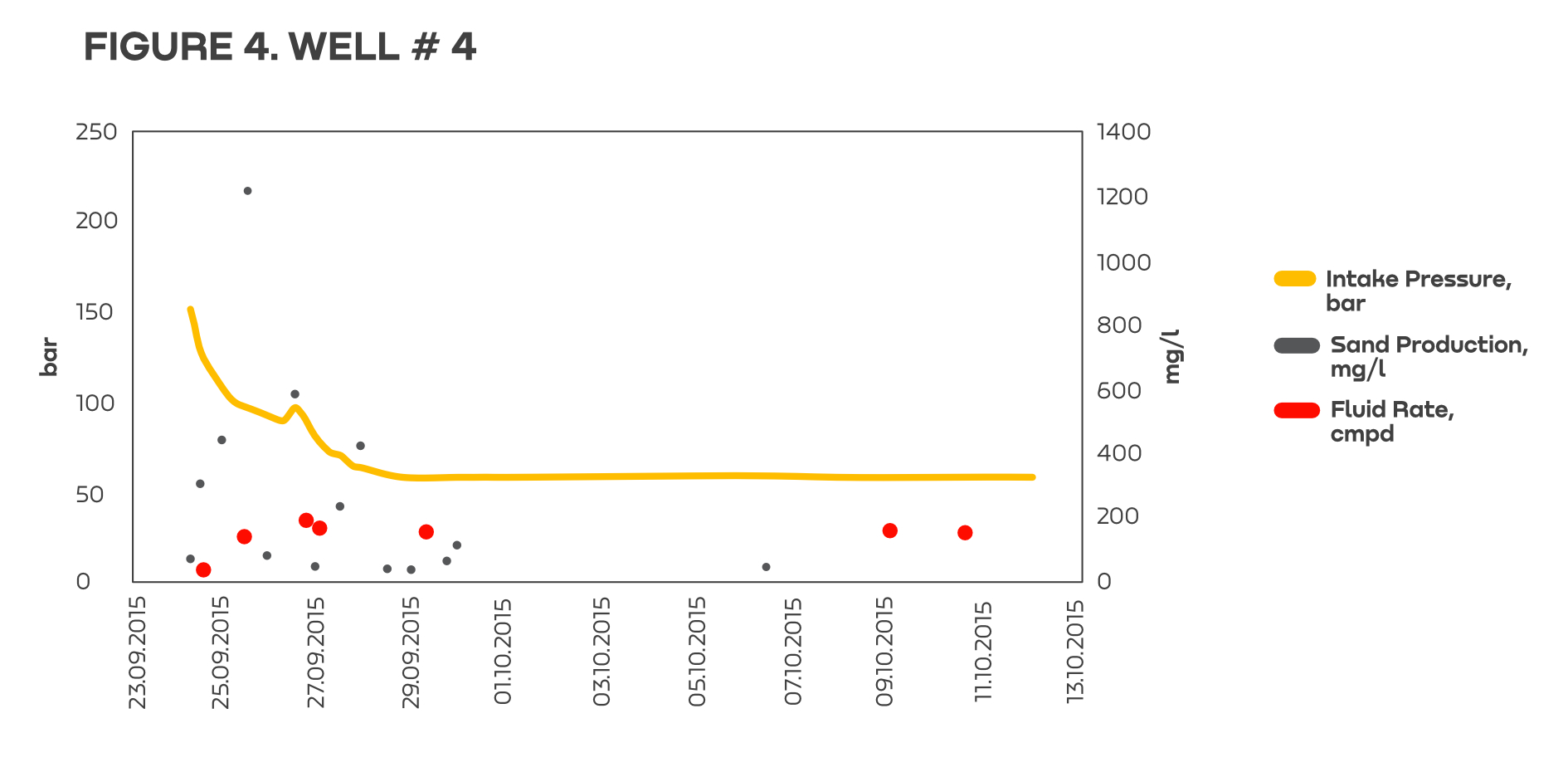
Case # 5
Reservoir Data
| Static Pressure | 179–225 bar |
| Bubble Point Pressure | 72 bar |
| Solution GOR | 163 scf/stb (29 m3/m3) |
| Oil Density | API 30.4 (874 kg/m3) |
| Oil Viscosity | 21 cP |
| Reservoir Depth | 6,804-7,000 ft TVD (2,074–2,131 m TVD) |
Operating Data
| ESP Setting Depth | 7,310 ft MD (2,227 m MD) |
| Production | 15–35 cmpd |
| WC | 15–20% |
| FBHP | 40 bar |
| Start-up Date | 05 March 2017 |
| Status | Pulled (leakage problem) |
| Runlife | 463 days |
| Max. Sand Production | 1,794 ppm (1,794 mg/l) |
| Operating duty | Constant, followed by periodic mode |
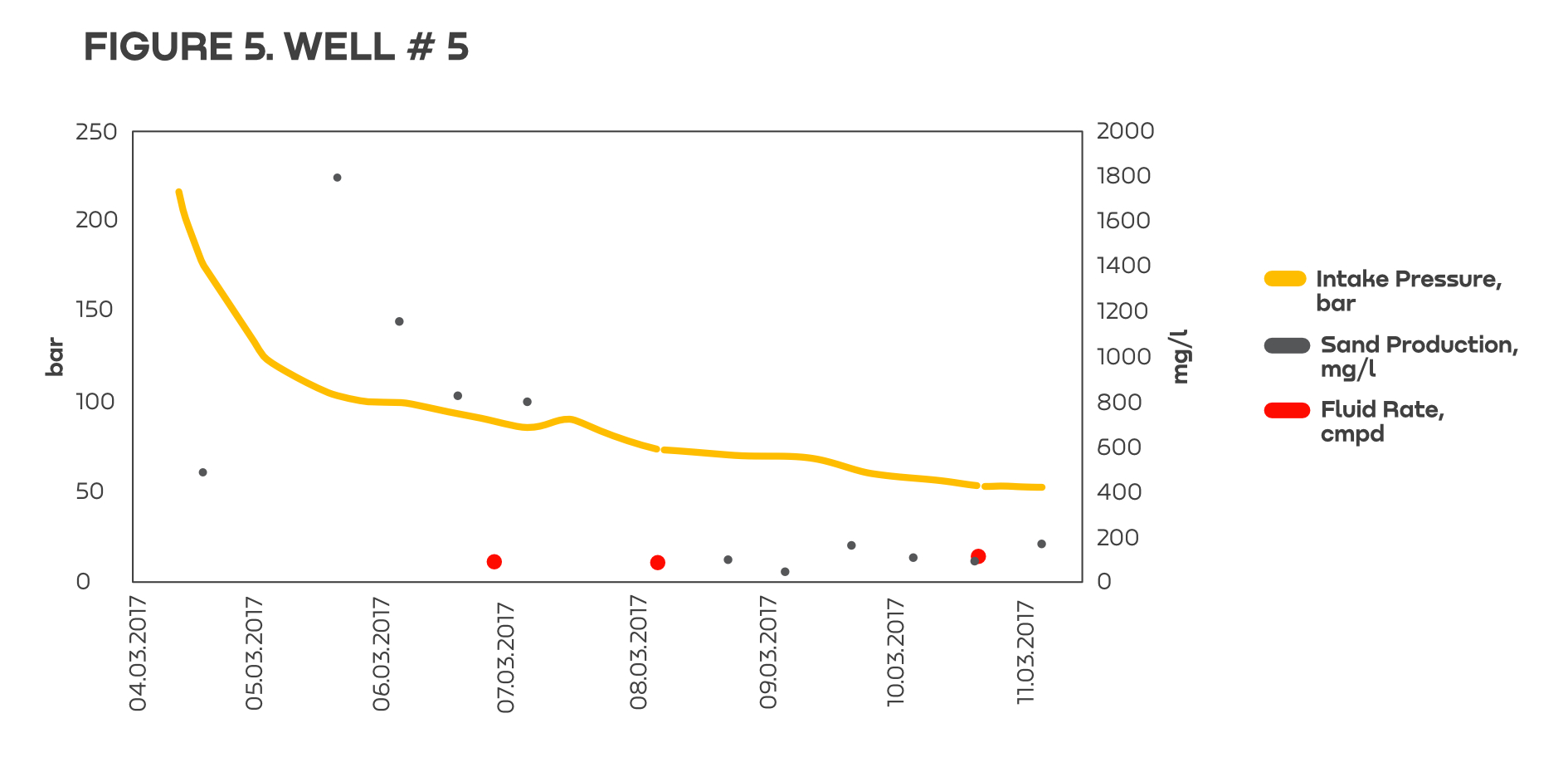
Case # 6
Reservoir Data
| Static Pressure | 180–220 bar |
| Bubble Point Pressure | 72 bar |
| Solution GOR | 163 scf/stb (29 m3/m3) |
| Oil Density | API 30.4 (874 kg/m3) |
| Oil Viscosity | 21 cP |
| Reservoir Depth | 6,800-6,970 ft TVD (2,075–2,125 m TVD) |
Operating Data
| ESP Setting Depth | 8,583 ft MD (2,616 m MD) |
| Production | 8–21 cmpd |
| WC | 21-29% |
| FBHP | 40 bar |
| Start-up Date | 27 September 2015 |
| Status | Pulled (insulation failure) |
| Runlife | 420 days (runlife of previously installed ESPs was 25 and 65 days) |
| Max. Sand Production | 3,250 ppm (3,250 mg/l) |
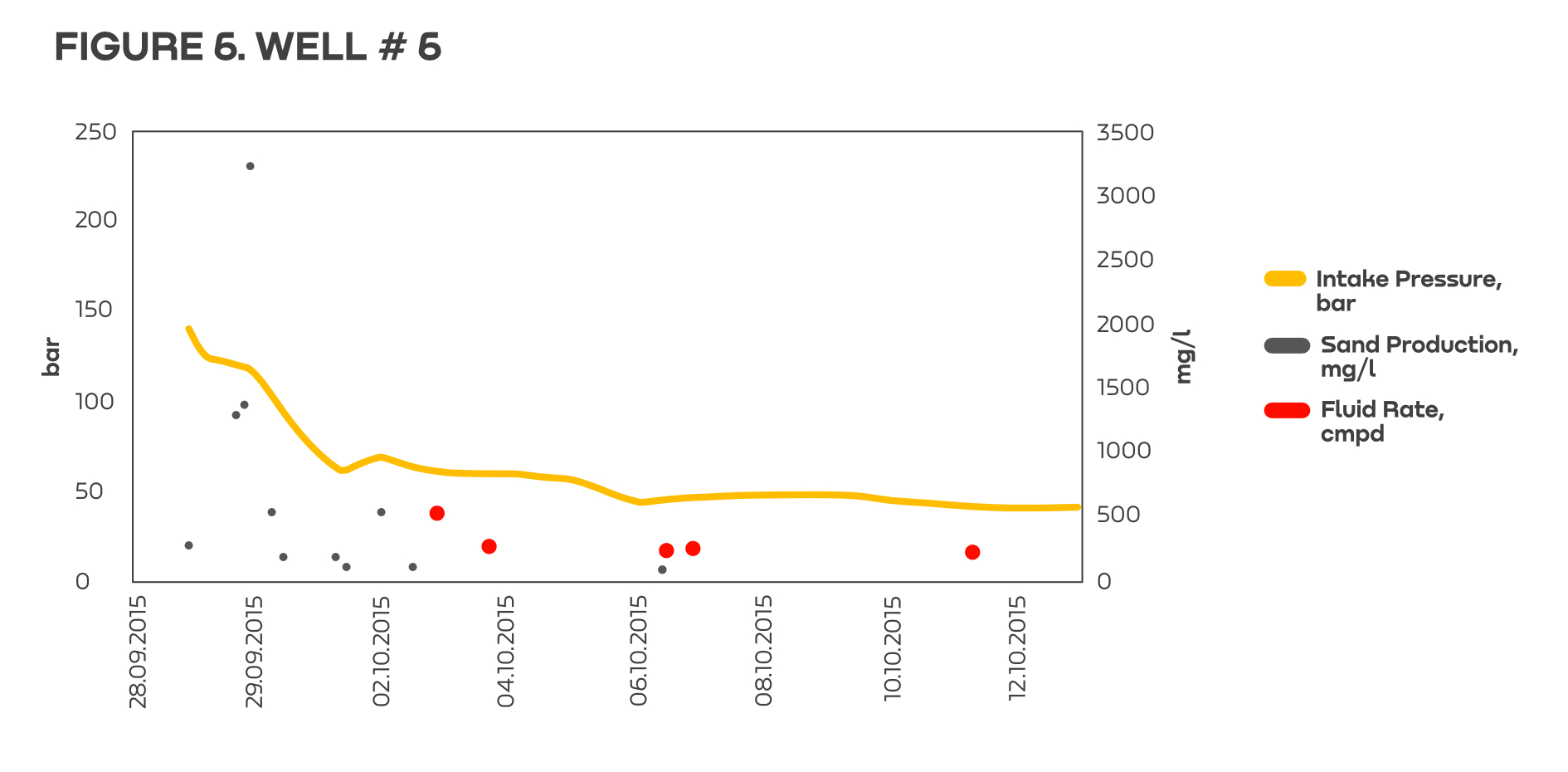
These reservoirs are found at 6,900–8,200 ft TVD (2,100-2,500 m TVD). Oil wells are drilled from well pads, ESP friendly deviated along 8,860-11,800 ft MD (2,700-3,500 m MD) and completed with 7″ (177,8 mm) and 6,61″ (168 mm) API Casing. Downhole temperatures are ranging between 176 and 212 °F (80-120 °C).
The complicating factors:
- Narrow operating range of existing ESPs;
- Gas content at pump intake is above 60%;
- Sand content exceeds 2,000 ppm (2,000 mg/l);
- High DLS;
- High power consumption.
The Client contacted us to address rapid wear and frequent ESP failures due to high sand content in the produced fluid.
We have developed an innovative wear-resistant modular UHS ESPTM. Also, we created new methods of testing the heat resistance of the UHS ESPTM bearings. Also, we tested the reliability of bearings and components of the system in high sand content conditions on specially designed testing benches.
After passing extreme sand content tests, we manufactured and installed in client’s wells the following UHS ESPs:
- Low-flowrate UHS-200 system designed for NP flow range from 50 to 280 bblpd (from 8 to 45 m3/d);
- Wide-range UHS-500 system designed for NP flow range from 125 to 560 bblpd (from 20 to 90 m3/d);
- Power efficient UHS-600 system designed for NP flow range from 280 to 720 bblpd (from 45 to 115 m3/d).
It is considered that a higher rotational speed hurts the wear resistance of ESP components, particularly when exposed to abrasive fluids. However, advanced design features and material selection enlarged the tolerance of UHS ESPTM to solids content more than 2,000 ppm (2,000 mg/l), which outweighs the traditional standard-speed ESP 2-4 times and improved other performance properties due to a high operating speed of 12,000 rpm.

